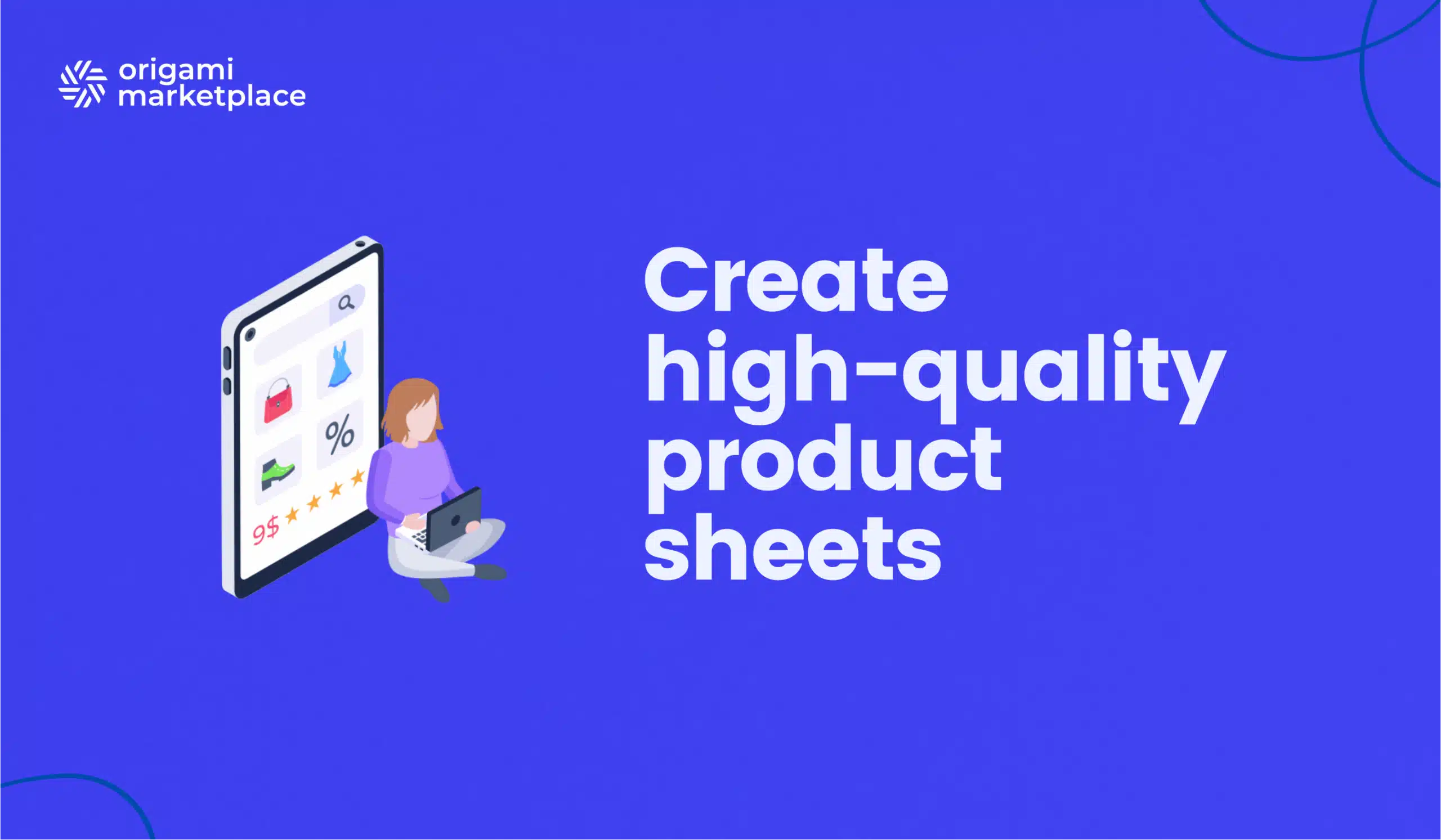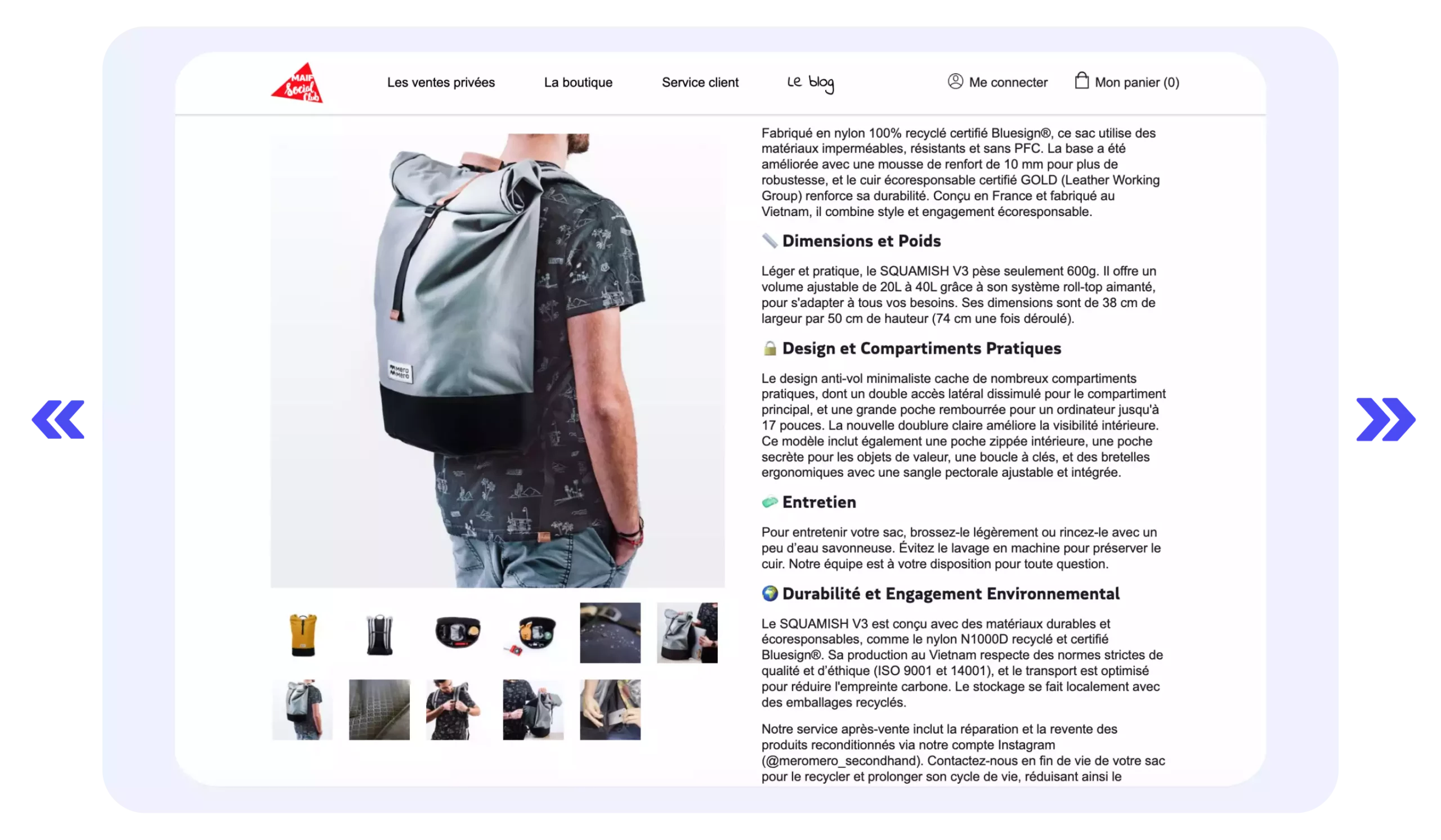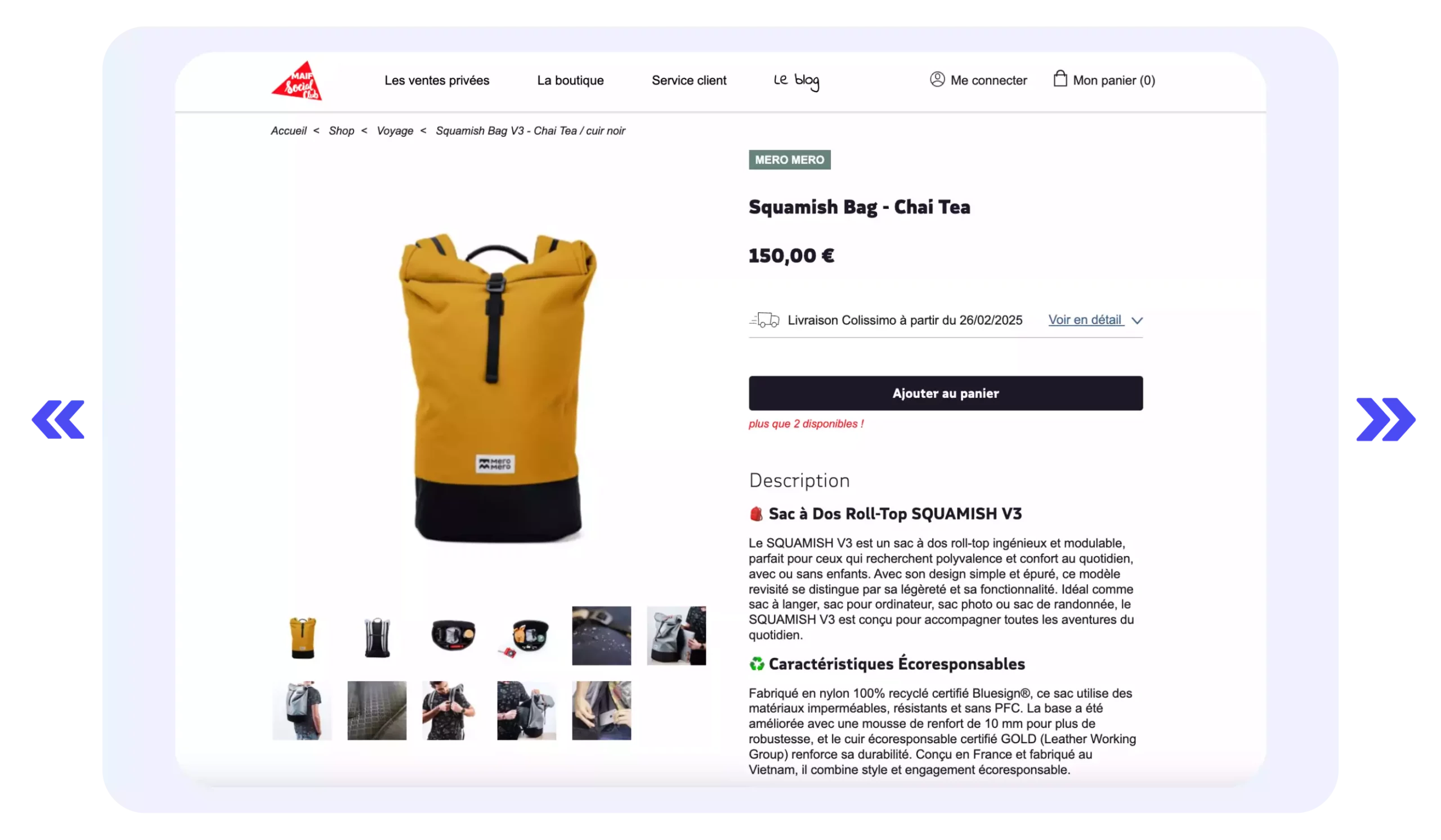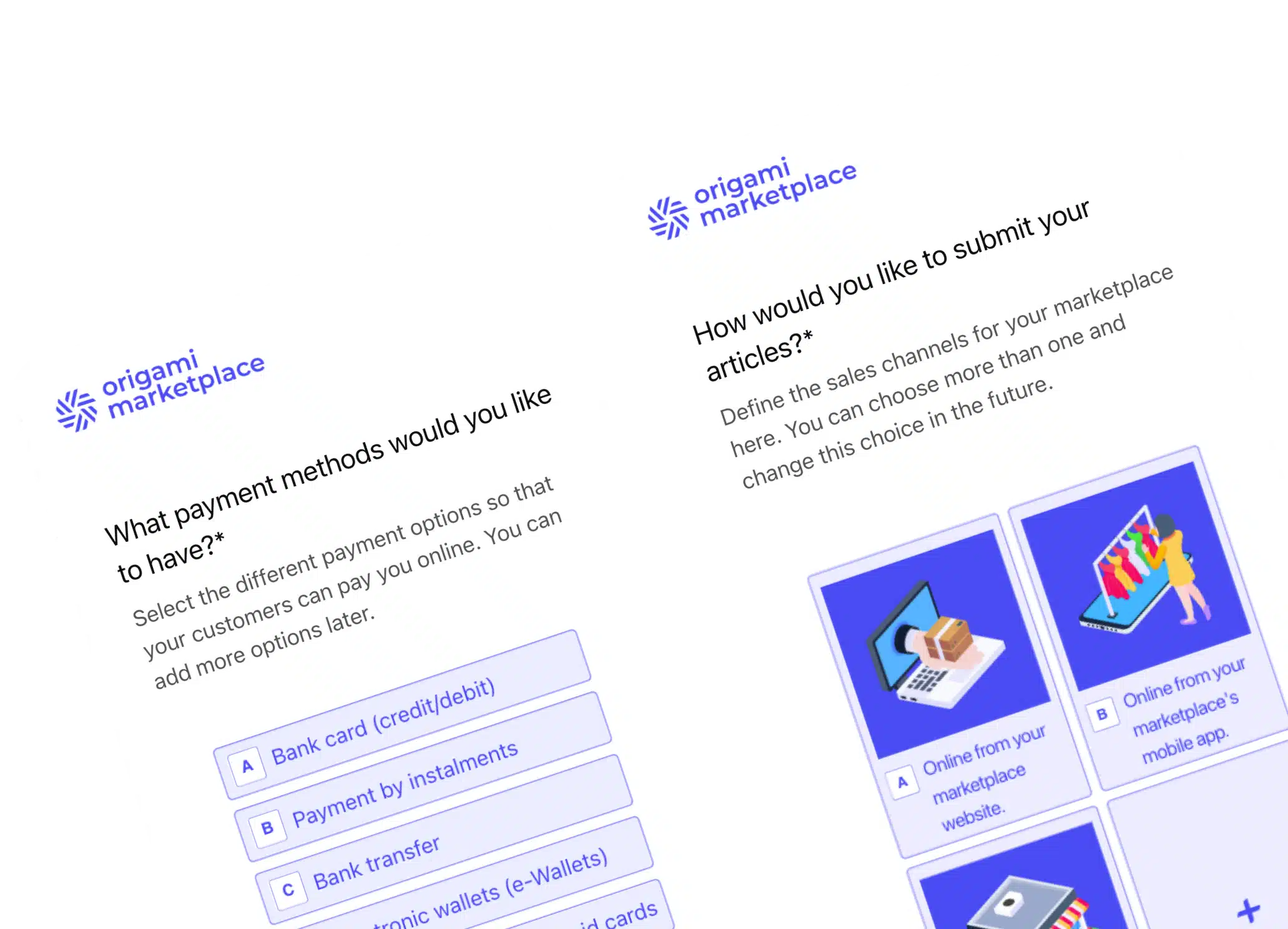How to create a product data sheet for your marketplace? 📄
- Arnaud
- 7 reading minutes

Product data sheets are far more than simple descriptions, they are the first point of contact between your customer and your offering. They must persuade, reassure, and guide the buyer in an environment where competition is fierce and every detail counts. In the absence of physical interaction, the quality of your product sheet becomes the cornerstone of credibility and user experience. This technical and marketing challenge for a marketplace operator often requires the intervention of specialists to ensure consistency, SEO optimization, and a uniform presentation of your products. In this article, we reveal all the key elements to successfully meet this challenge:
- Structure and uniformity of product data sheets
- Quality of visuals and multimedia
- Titles, descriptions, and SEO optimization
- Reassurance and customer reviews on a product sheet
- Management of attributes and technical data
- Common mistakes to avoid and best practices
- The importance of a qualified provider
- Mobile optimization and UX of a product sheet
- A/B testing of your product data sheets
- Personalization and recommendations
- Loading speed optimization
- Integration of interactive elements
- Analysis and performance of your product sheets
👋 Short on time? Find a summary of the article here.
1. Structure and uniformity of product data sheets
Uniformity in your product data sheets is essential for a marketplace with extensive and heterogeneous catalogs. Enforcing predefined templates helps avoid an overload of conflicting information and ensures visual consistency. Clear and detailed models (including mandatory information, attributes, visuals, and instructions) facilitate navigation and comparison for the buyer, while also reinforcing your brand image.
2. Quality of visuals and multimedia
Images and videos are the primary conversion drivers in online commerce. High-resolution visuals (at least 1000 x 1000 pixels) and well-composed shots create a professional first impression.
The main image set against a white background and free of superfluous elements should highlight the product, while additional photos (from multiple angles, in real-life settings) and demonstration videos provide an immersive dimension essential for compensating for the lack of physical contact.


3. Titles, descriptions, and SEO optimization
The title of a product sheet is your storefront: it must be both catchy and informative. Include strategic keywords at the beginning of the title (using between 8 and 20 words) to enhance your organic search ranking on marketplaces and Google.
Descriptions should be rich and detailed: adopt a dual approach with a short version for summaries and a long version (at least 300 words) to elaborate on technical specifications, benefits, usage instructions, and practical tips. The use of ALT tags for images and the optimization of metadata also ensure greater visibility on search engines.
4. Reassurance and customer reviews on a product sheet
Reassurance elements on a Product Sheet play a crucial role in overcoming purchasing hesitations:
- Clearly display information on fast delivery, simplified returns, secure payment, and guarantees (for example: “Satisfaction guaranteed,” “48-Hour delivery,” or “Pay in installments with PayPal or Floa”).
- Verified customer reviews boost credibility studies show that up to ten times more customers are likely to purchase when positive reviews are present.
- Including these testimonials and responding professionally to negative comments reinforces trust and improves the user experience.
Ready to turn your B2B, B2C, or C2C marketplace vision into reality?
To help you develop the best platform possible, we’ve gathered all the must-have features, key technical considerations, and best practices in a comprehensive document:
Download the Specifications template 🗒
Perfect for smaller or medium-scale projects without a formal purchasing process. It will help you outline your requirements effectively and streamline your selection process.
Download the Request for Proposal template 📒
Ideal for larger, more complex marketplace projects with a formal purchasing department or advanced procurement policies.
5. Management of attributes and technical data
A precise classification (taxonomy) through relevant categories and attributes is indispensable for proper indexing of your products on marketplaces. Specify technical characteristics (size, color, material, etc.) and use feed management tools to synchronize your catalog.
Using a GTIN (Global Trade Item Number) or EAN-13 (a 13-digit code), in compliance with international standards, ensures authenticity and facilitates search filtering. These well-documented technical details also contribute to the SEO optimization of your product sheet and guarantee a smooth purchasing experience.

6. Common mistakes to avoid and best practices
To create successful product data sheets, it is crucial to know and avoid certain common errors:
- Poor-quality images or those not meeting platform requirements.
- Incomplete or outdated descriptions that might mislead the buyer.
- Failure to comply with SEO guidelines, such as duplicate content or lack of optimized meta tags.
- Omitting reassurance elements that could hinder a purchase.
Adopting best practices such as regularly updating information, incorporating multimedia content, and analyzing performance (using analytical tools integrated into marketplaces) will continuously optimize your sheets and increase conversion rates.

Antoine Mantel
→ Chat with our expert
7. The importance of a qualified provider
The challenges associated with creating and optimizing product data sheets are numerous and often require specialized expertise.
Hiring a qualified provider allows you to benefit from personalized support and professional tools such as PIM (Product Information Management) solutions. A digital marketing expert will guide you in crafting uniform sheets optimized for SEO and compliant with marketplace technical requirements, while also adding the creative touch necessary to stand out from the competition.
8. Mobile optimization and UX of a product sheet
In 2025, shopping via smartphones and tablets is the norm; it is imperative that your product sheets are perfectly adapted to all device types.
- Responsive design: Ensure the layout automatically adjusts to different screen sizes for a seamless navigation experience.
- Intuitive navigation: Clear menus and well-placed action buttons improve user experience and reduce bounce rates.
- Loading speed: A mobile-optimized interface guarantees quick access to essential information, thereby enhancing user engagement.
Ensure your success today. Take advantage of our free configurator to define the key outlines of your project and speak with one of our experts for a personalized study.

9. A/B testing of your product data sheets
Integrating an A/B testing strategy allows you to identify and optimize the most effective elements of your product sheets.
- Compare different versions: Test variations of titles, visuals, and layouts to determine which ones convert best.
- Analyze results: Use the collected data to continuously adjust your content and maximize the effectiveness of your sheets.
- Iterative approach: A/B testing helps you evolve according to your audience’s preferences, ensuring a constant optimization of the user experience.
10. Personalization and recommendations
Artificial intelligence now offers powerful solutions to personalize the display of your Product Sheets.
- Dynamic content: Present sheets tailored to each user’s browsing behavior.
- Complementary products: Automatically suggest similar or complementary items based on purchase history and preferences.
- Customized experience: Advanced personalization better meets customer expectations, increasing the likelihood of purchase and fostering loyalty.
11. Loading speed optimization
Beyond the quality of visuals, optimizing loading speed is crucial to maintain visitor interest.
- Image compression: Reduce file sizes without compromising visual quality to speed up loading times.
- Technical optimization: Implement caching tools and minimize code to improve overall page performance.
- SEO impact: A fast-loading page not only enhances user experience but is also favored by search engines.
The technology chosen for your marketplace project is the essential pillar of its success. Take the time to review all available solutions before launching, and do not hesitate to consider a more efficient alternative if necessary.

Alexandre Duquenoy
→ Chat with our expert
12. Integration of interactive elements
To boost engagement and offer an immersive experience, consider integrating interactive elements into your product sheets.
- 360° views: Allow users to view the product from every angle for a better appreciation of its details.
- Augmented reality videos: Provide the possibility to virtually test the product in a near-real environment, increasing buyer confidence.
- Interactivity in service of information: These innovative tools enable deeper immersion and a better understanding of the product, thereby stimulating the purchase decision.
13. Analysis and performance of your product sheets
Finally, it is essential to measure the impact of your product data sheets to adjust your marketing strategy.
- Analytical tools: Integrate tracking solutions to monitor user behavior, time spent on the sheet, and conversion rates.
- Regular reporting: Analyze the collected data to identify strengths and areas for improvement.
- Continuous optimization: The insights gained allow you to adjust both the content and layout, ensuring a constant improvement in the effectiveness of your sheets.
To succeed, it is crucial to structure and optimize your Product Data Sheets by combining high-quality visuals, detailed descriptions, and careful SEO practices. All these efforts not only enhance your visibility but also increase your conversion rates and customer loyalty. The technical and marketing challenges often mean that hiring a specialized provider is the best way to achieve a professional and coherent result across all channels.
Origami Marketplace positions itself as the ideal, scalable SaaS solution, enabling you to create and manage your Product Sheets efficiently and intuitively. With its advanced features and expert support, it provides you with the means to optimize your online presence and convert visitors into loyal customers.
How to Create great product data sheets?
- Uniformity & structure: Use clear templates to ensure visual consistency.
- Impactful visuals: Prioritize high-quality images/videos, including lifestyle shots.
- SEO & content: Craft catchy titles and detailed descriptions to optimize search rankings.
- Reassurance: Display customer reviews, guarantees, and delivery information.
- Technical data: Accurately provide attributes and use unique identifiers (GTIN or EAN-13).
- Mobile experience: Adopt a responsive design and intuitive navigation.
- Testing & personalization: Conduct A/B testing and tailor the display based on user behavior.
- Performance analysis: Optimize loading speeds and incorporate interactive elements for total immersion. Finally, monitor and adjust your performance using analytical tools.
👉 Need a turnkey solution?
Turn to a specialized provider like Origami Marketplace to accelerate your project. Discover how our API and network of partners can transform your business, no matter its size, thanks to our innovative marketplace solution.


